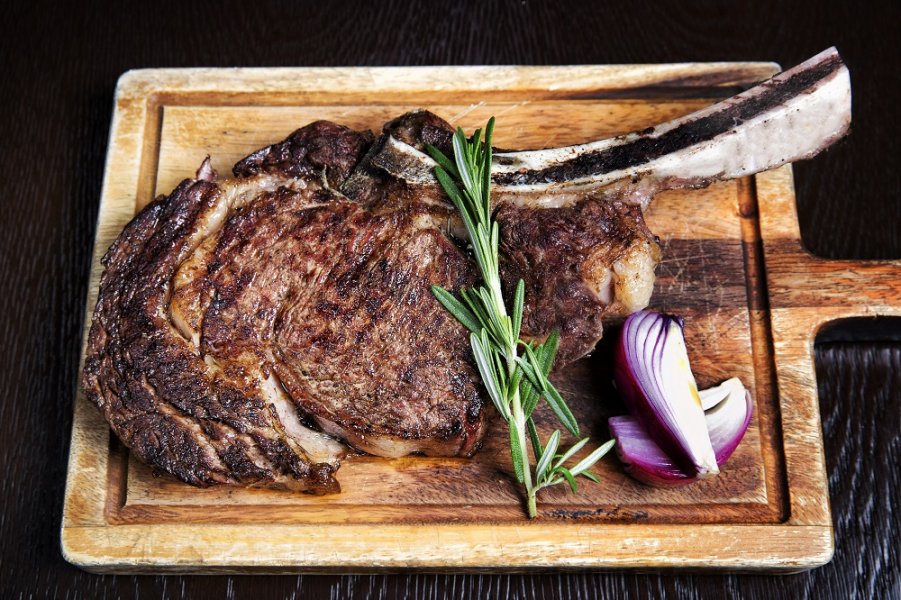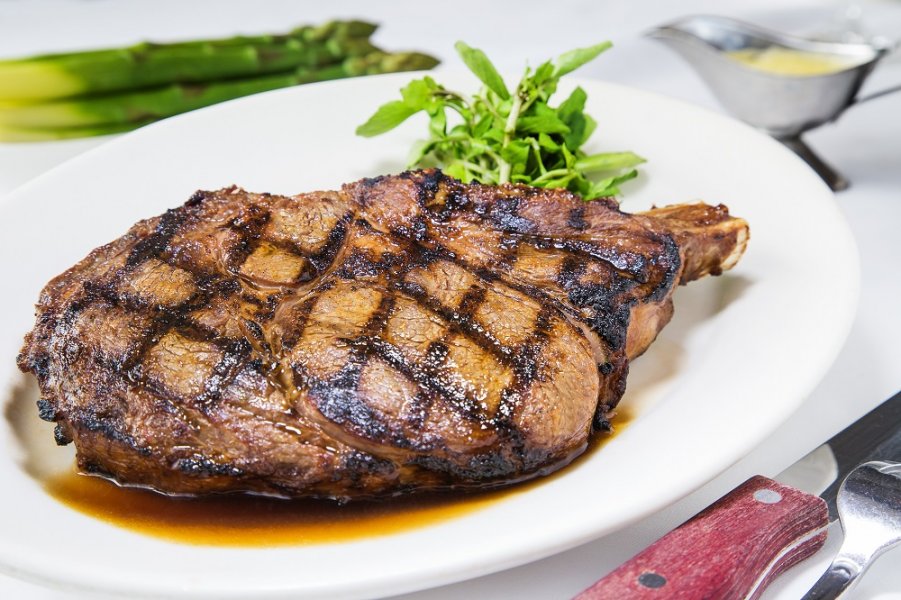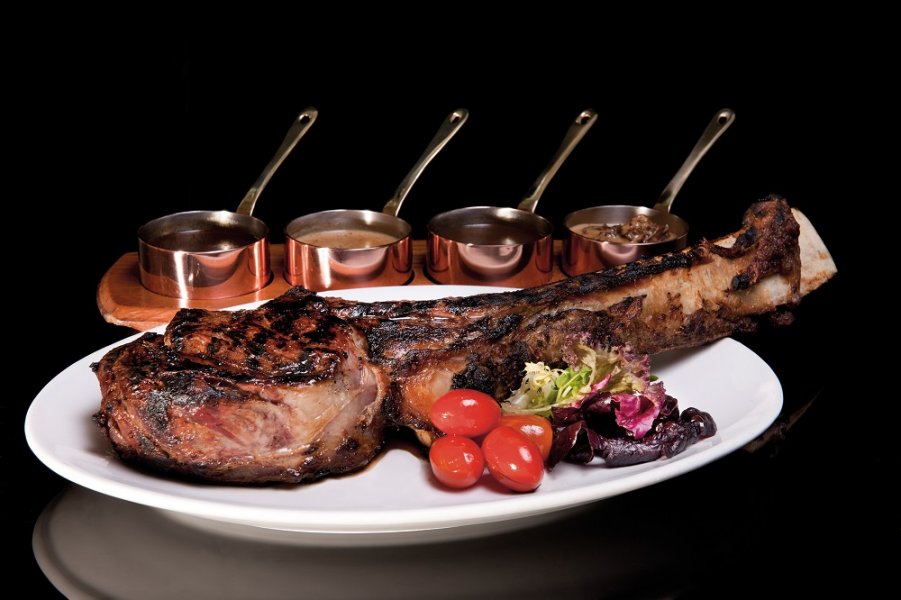A guide to the food and cuisine of Hokkaido
And where to get it without leaving Singapore
Japanophiles know that Hokkaido is really something special. Japan’s northernmost and second-largest island has gorgeous, rugged landscapes, mild summers, excellent skiing and abundant farmland. Not surprisingly, it also has some of the best produce and food products in the world, making the cuisine of Hokkaido a must-eat on any respectable foodie’s bucket list.
But if you can’t get there any time soon, fear not. Singapore’s exciting Japanese food scene has plenty of Hokkaido produce and dishes to tide you over in the meantime. Here’s what you need to know.
Surrounded by the waters of the Sea of Japan and the Northern Pacific Ocean, Hokkaido is famous for its cold-water seafood, and visiting a fish market for a fresh donburi topped with uni, ikura, scallops, crab and other seafood is a must-do for tourists to the island. Advanced foodies know that cold-water fish and seafood are generally acknowledged to be tastier, thanks to the extra fat, and healthier thanks to the extra Omega-3 fatty acids.

Kaisendon at Kan Sushi
To try it in Singapore, book a table at Kan Sushi, the intimate, wood-paneled sushi counter in Tanjong Pagar, which serves, among its many fresh seafood specialties, the immensely popular Hokkaido Kaisendon, topped with all the best catch from the island—expect all the essentials such as botan shrimp, scallop, fatty tuna and a little dollop of fresh uni.
Raw seafood isn’t everybody’s thing, but that doesn’t mean you have to miss out on the bounty of Hokkaido. Over on Kampong Bahru, casual izakaya Manpei specializes in all things from the northern island, and such as the hokke, a relative of the mackerel found in abundance around Hokkaido. Manpei’s Chef Urayama serves a simple grilled version, served with little more than a squeeze of lemon and some daikon.
Japanese food isn’t big on dairy, but the food of Hokkaido is a shining exception to the rule. Thanks to its miles of pastures and dairy farms, the milk, butter and of course ice cream of Hokkaido are famous throughout Japan and among foodies abroad. Dairy products aside, there are some pretty unusual dishes that owe their existence to Hokkaido’s dairy obsession, some of which can be found in Singapore.
For instance, the aptly named Hokkaido Izakaya—which recently opened a second brand at Wisma Atria’s Japan Food Town—serves Hokkaido dairy products in a variety of dishes, such as the milk hotpot with, as well as the Japanese omelet, topped with a knob of Hokkaido.
(Incidentally, the restaurant is also a great place to try fresh Hokkaido soba noodles, made fresh daily from scratch. Home to Japan’s largest soba producer, Hokkaido is pretty famous for buckwheat as well.)
To try something cheesy and comforting, head to tonkatsu specialist Ma Maison, which also has a ramen shop at Capitol Piazza. Order up the signature dish, the Original Creamy Cheese Ramen, where they add a fistful of grated, powdery Hokkaido cheese to the ramen broth (miso, shio or shoyu), giving a rich, salty layer to the already umami-licious flavor.
With its northern location and high elevation, much of Hokkaido has a cool climate throughout the year, with temperatures going well below zero in the winter—perfect weather for rich meats. Hokkaido wagyu is famous, with grass-fed wagyu from Tokachi subprefecture being quite a big deal. In Singapore, you don’t have to look far to find Hokkaido wagyu. The moody, jazzy Kamoshita on Neil Road makes everything from its beef tartare to its beef curry rice with Hokkaido wagyu.

Hokkaido beef tartar at Kamoshita
For something truly unusual, though, head to Boat Quay’s Hokkaido restaurant Hitsuji Club, probably the first in Singapore to specialize in the strangely named jingiskan (also spelled genghiskhan). Named after the Mongolian conqueror—we’re told it has to do with the domed-shaped grill the dish involves, resembling a Mongolian hat—the quintessentially Hokkaido barbecue experience involves not beef but lamb, another rarity for Japan. Hitsuji Club serves platters with various cuts, from loin to chop, as well as some of the fresh vegetables Hokkaido is also famous for: leeks, onions, pumpkin and more.
Like what you see? For regular updates on Japanese food and drink in Singapore, follow Bite! Japan on Facebook.
Advertisement
Japanese sake has been a small but strong trend among Singapore’s more discerning diners—those who know all about the unique delights of places like Orihara Shoten, Kakure and, most recently, the exciting six-month pop-up by the renowned sake brewery Dassai, in Wisma Atria’s Japan Food Town.
If you’ve always wanted to learn more about the unique delights of Japanese rice wine, you’ll have to start with the label. Almost entirely in Japanese, sake bottles can be bewildering for the Singaporean fan. Not to worry—we have this handy diagram and some helpful tips from sake sommeliers to get you started.
As with wine, the sake label has lots of crucial information. Here’s what to look for.
1. Company seal. This is the name of the brewery or producer, as well as their address.
2. Name of the sake. This is usually different from the name of the producer, though sometimes it might be the same.
3. Type of sake. This one says “super dry”. Other labels may indicate here if it is a premium sake, and if so, which one in particular. This information is sometimes also indicated in English.
4. Special Ingredients. Sake is normally made with rice, yeast, water and koji (mold spores). If there are any other ingredients added, such as malt (tokubetsu), there will be a special symbol here.
5. Date of production. In general, sake is best consumed within two to three months of production and within a couple days of being opened.
6. Types of sake
There are seemingly endless varieties of sake, but experts tend to break it down into five main types. An important distinction here is the seimaibuai of the rice being used. (For more on this, see #7.)
Daiginjo (大吟醸) has a seimaibuai of roughly 50%. These are usually sweet, aromatic and natural tasting, and are recommended for beginners as they’re easy to drink.
Ginjo (吟醸) has a seimaibuai of at least 60% and has additional alcohol added. It’s similar to daiginjo—fruity, light and aromatic.
Junmai (純米) is pure sake—brewed with nothing but rice, water, yeast and koji. With its strong, not-so-sweet taste, it’s suitable for hardcore sake fans. The seimaibuai varies but is mostly around 70%. Many bottles are labeled junmai ginjo, which means pure sake with 60% seimaibuai.
Nama ( 生) is unpasteurized sake with a more intense flavor. It’s fresher and more aromatic but the quality is less stable.
Honjozo (本醸) is sake brewed with seimaibuai of at least 70%, with distilled alcohol added.
7. Seimaibui. Rice is milled or “polished” before being used in brewing to eliminate fat, protein, and minerals that can inhibit fermentation. The percentage on the bottle represents the amount of the original rice grain that remains after polishing. Generally, the more the rice is polished, the more refined the sake’s flavour. That is to say, the lower the seimaibui percentage the better.
8. Alcohol Content. Boozier than wines, sake’s alcohol content ranges from 15-20%.
9. Drinking Suggestion. The label gives a recommendation on how the sake is best consumed (most ranked from cold to hot): at room temperature, with ice or hot. A recommendation with two circles is advice you really should follow, while one circle is not as highly suggested.

Kazuhiro Sakurai, President and Fourth-Generation owner of Dassai Brewery
From a sake point of view, how would you describe Singapore right now?
I think the Singapore market is going to be very good, especially for the high-end Japanese sake. Many high-end Japanese restaurants have opened in the past couple years, and they carry high-end sake, like Ginjo and Daiginjo styles. And as you know, Singapore has many foreigners who visit and dine at these restaurants. So not only is the Singaporean market itself very strong, it also acts as a showcase for the world.
What are some tips for choosing sake to suit the occasion?
There aren’t as many difficult pairing rules in sake, unlike in the wine world. Simply, try heavy food with heavy sake, and light foods with light sake. Also, sake goes very well with seafood and vegetables.
What’s unique about Dassai sake?
We are focused on the premium Junmai-Daiginjo sake category, made with the best sake rice grain, Yamada-Nishiki. This makes us specialists of fruity and clear-tasting sake.
Like what you see? For regular updates on Japanese food and drink in Singapore, follow Bite! Japan on Facebook.
Advertisement
A good steak can go a long way, especially when you're having a bad day. From the tender sirloin to the juicy ribeye, here are some places that know how to serve up a well-marbled steak to bring out your inner carnivore.

This is a longtime stalwart when it comes to New York-style steaks. They’ve got a real slick Mad Men vibe with semi-circular, leather booths, wood-paneled walls and some serious mood lighting. Also serious is their fantastic list of choice cuts like USDA Prime dry-aged ribeye and Aussie grassfed porterhouse. Don’t miss the indulgent mac and cheese. #01-05 Pan Pacific Serviced Suites, 96 Somerset Rd.

Dim lighting, earth tone furnishings and croc print-inspired chocolate chairs give this Italian steakhouse a distinctly sexy feel; a great date venue. In case the name wasn’t a dead giveaway, it’s all about the meat here, specifically wagyu, so forgo their pastas in favor of their signature Fiorentina—a deliciously smoky char-grilled 1-1.2kg T-bone steak of marble score six Aussie wagyu, big enough to be shared by three or four people. 25 Mohamed Sultan Rd.

Singapore is no stranger to outposts of international celebrity restaurants, but this one by Wolfgang Puck is an enduring classic, appearing in our Top 10 year after year. It serves a really impressive menu of beef, including 300-day grain fed Australian Angus from Rangers Valley and Japanese Wagyu, along with a range of unique and delicious sauces like their signature Argentinean chimichurri. Cocktails are also amazing. If you’re looking for an classic meat extravaganza, this is the ultimate. #B1-71 Galleria Level, The Shoppes at Marina Bay Sands, 2 Bayfront Ave.

It has been the year of casual barbecue in Singapore, but when it comes to classic, carnivorous glamour, this American steakhouse stalwart is still a sure bet, especially since it lightened things up after its recent-ish renovation. Have a “Mortini” or two at their brass-colored island bar before heading in for a big, fat juicy slab of steak the size of a baseball mitt. The stars are the onion bread and the USDA prime ribeye, as well as desserts like the hot chocolate cake. 4/F Mandarin Oriental, Singapore, 5 Raffles Ave.
The focus at Skirt may be squarely on premium meats grilled to perfection on the centrepiece South American parilla grill, but this ain’t no Old World steakhouse. With floor to ceiling windows, curved high-backed sofa seating and dramatic and sculptural lamps hanging from the ceiling, the space is quite glamorous. Black Angus, various wagyus and other delectable meats aside, there is also sustainably sourced seafood, duck confit, lamb shank and other meaty delights, not to mention some lovely starters like ceviche and crab salad. W Singapore - Sentosa Cove, 21 Ocean Way.

The reliable, but unstuffy, steakhouse is known for its selection of Australian Angus and USDA-grade meats. Aside from perfectly seared meats, the menu is kept to steakhouse classics including starters like crab cakes and prawn cocktail, and mains like lamb cutlets and fish. This refined yet relaxed 140-seater restaurant also boasts a wine collection of over 150 bottles. 3/F Swissôtel The Stamford, Singapore, 2 Stamford Rd.
Advertisement